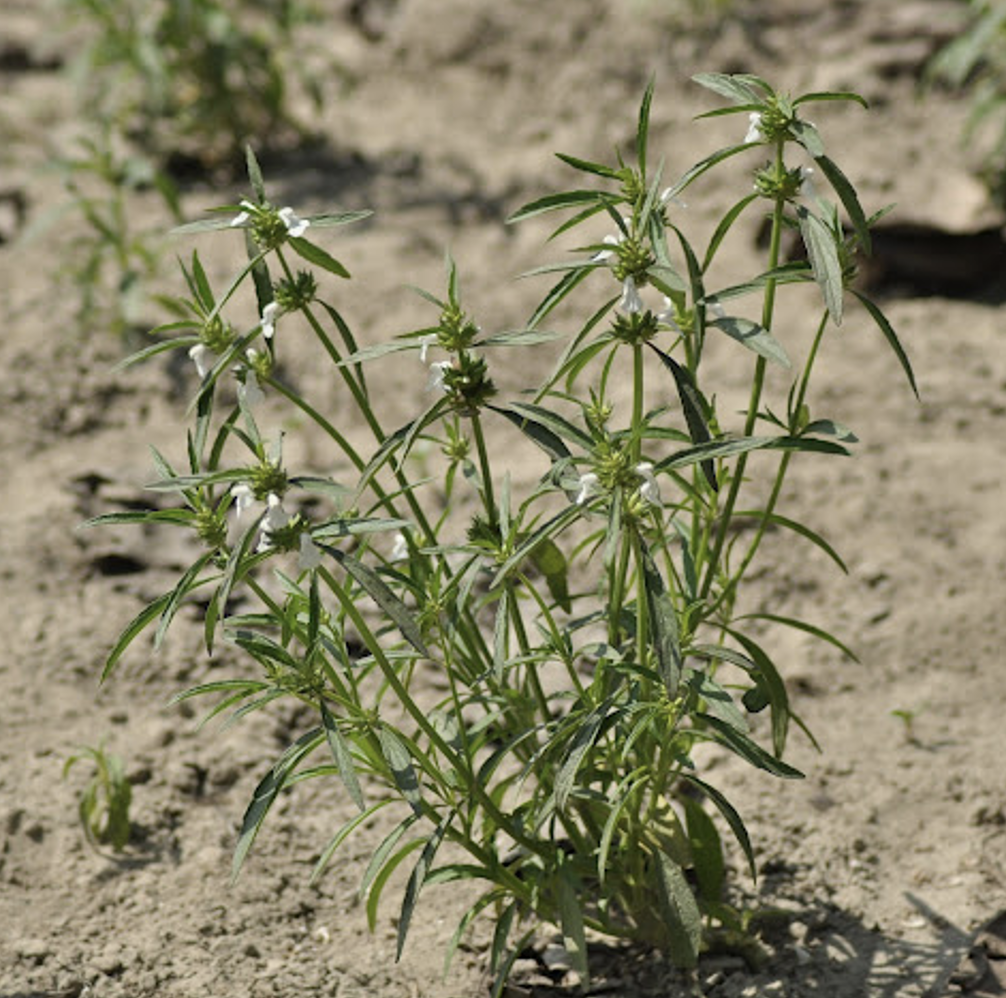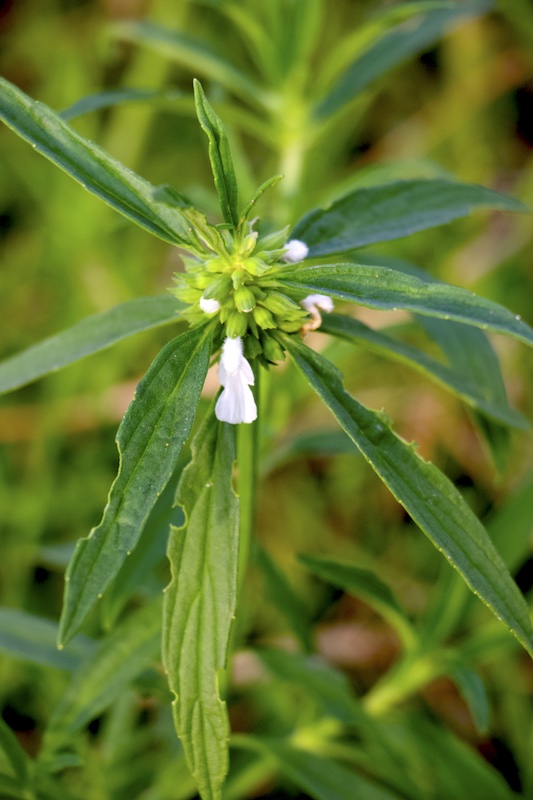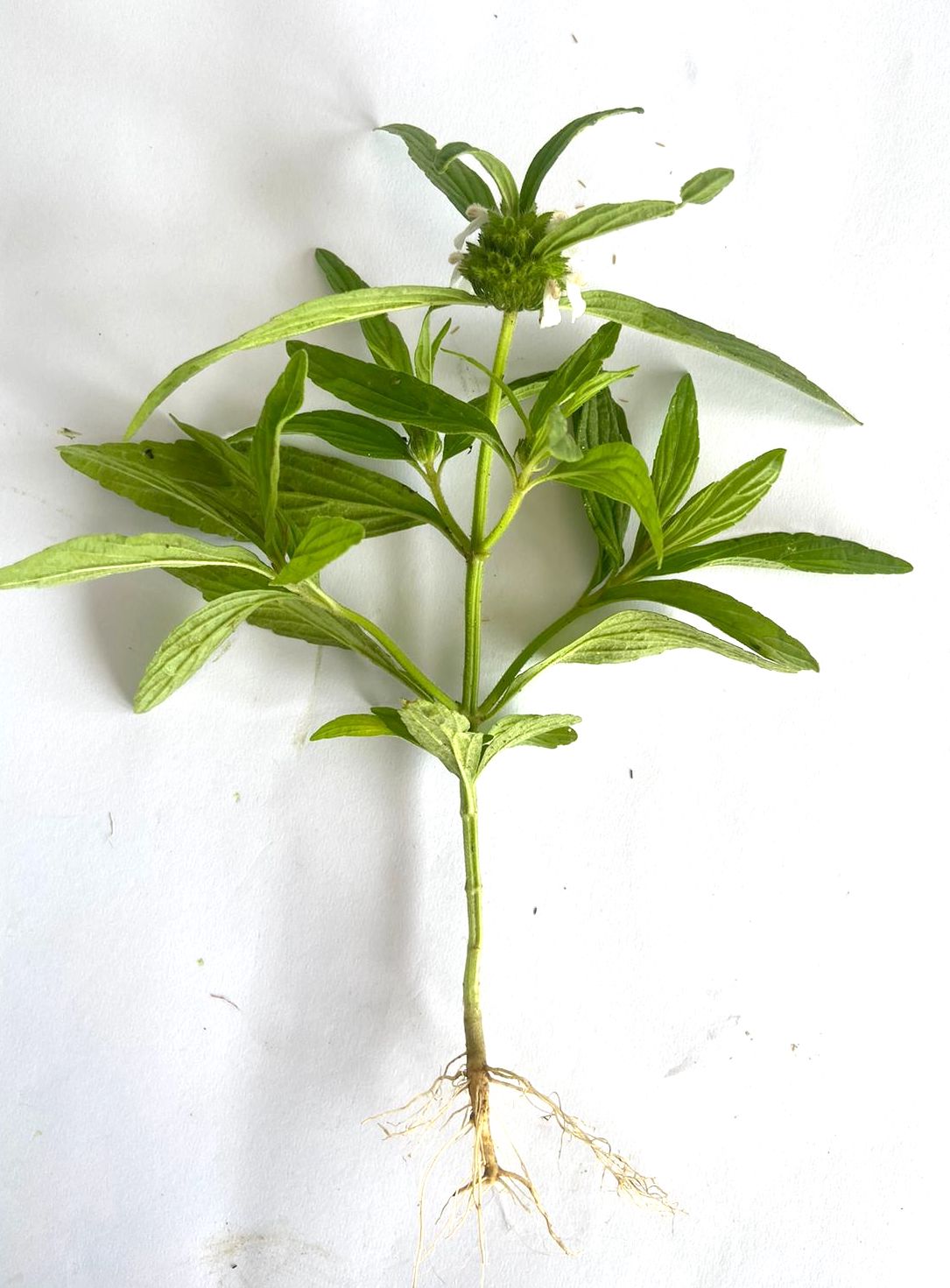

Identification Notes




EPPO CodeLEVAS |
Life CycleAnnual |
MorphologyStem: erect, 4- grooved, stout, scabrous. Leaves: linear or linear-lanceolate, subserrate, whorls axillary and terminal, bract very short. Inflorescence: Verticillaster, flower sessile. Seed- red brown. |
Growing seasonRabi and Kharif |
Germination periodJanuary to December |
Flowering periodOctober to March |
PropagationBy seed |
HabitatPrefer dry condition. Found in high land rabi crops and vegetables, roadsides, homesteads and fallow lands. |
Weed potentialWeeds of dry land rabi crops e.g. Pulse crops, Mustard, etc. |
Control measureManual weeding and/or Chemical control |
Recommended herbicidePre-emergence herbicide Atrazine 50 WP – 500 g /ha, Oxadiargyl at 80 g/ha |
DistributionThe plains of Mauritius, Java, India, and the Philippines are all frequent locations for Leucas aspera (Srinivasan, 2011). It is an extremely prevalent weed in India and the Philippines. |
Medicinal propertiesThe decoction of the whole plant is traditionally used for analgesic-antipyretic, anti-rheumatic, anti-inflammatory, antibacterial and antifungal treatment, and its paste is applied topically to inflamed areas (Gani 2003; Prajapati et al. 2010). It is also used as a medicine for coughs, colds, painful swellings, and chronic skin eruptions (Chopra et al. 2002), cobra venom poisoning (Reddy et al. 1993a; b), tooth infections (Rahmatullah et al. 2009) and mosquito repellent (Maheswaran et al. 2008) by the rural people and possesses wound healing properties (Mangathayaru et al. 2006). |
References
|